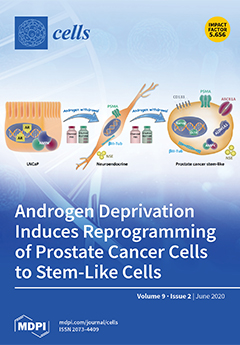Boron neutron capture therapy (BNCT) is a form of tumor-cell selective particle irradiation using low-energy neutron irradiation of boron-10 (
10B) to produce high-linear energy transfer (LET) alpha particles and recoiling
7Li nuclei (
10B [n, alpha]
7Li) in
[...] Read more.
Boron neutron capture therapy (BNCT) is a form of tumor-cell selective particle irradiation using low-energy neutron irradiation of boron-10 (
10B) to produce high-linear energy transfer (LET) alpha particles and recoiling
7Li nuclei (
10B [n, alpha]
7Li) in tumor cells. Therefore, it is important to achieve the selective delivery of large amounts of
10B to tumor cells, with only small amounts of
10B to normal tissues. To develop practical materials utilizing
10B carriers, we designed and synthesized novel dodecaboranethiol (BSH)-containing kojic acid (KA-BSH). In the present study, we evaluated the effects of this novel
10B carrier on cytotoxicity,
10B concentrations in F98 rat glioma cells, and micro-distribution of KA-BSH in vitro. Furthermore, biodistribution studies were performed in a rat brain tumor model. The tumor boron concentrations showed the highest concentrations at 1 h after the termination of administration. Based on these results, neutron irradiation was evaluated at the Kyoto University Research Reactor Institute (KURRI) with KA-BSH. Median survival times (MSTs) of untreated and irradiated control rats were 29.5 and 30.5 days, respectively, while animals that received KA-BSH, followed by neutron irradiation, had an MST of 36.0 days (
p = 0.0027, 0.0053). Based on these findings, further studies are warranted in using KA-BSH as a new B compound for malignant glioma.
Full article






